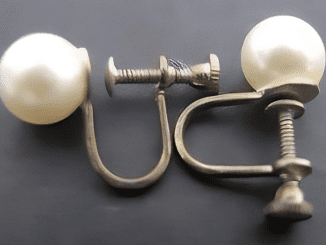Palmistry, or the study of the hand’s lines, shapes, and markings, has intrigued people for centuries. Many believe that the secrets of a person’s character, luck, and even financial fortune lie within the lines of the palm. But is there any truth to the idea that your hand can indicate if you’re destined for wealth or poverty? Let’s explore the world of palmistry, uncovering what specific lines and markings supposedly reveal about your financial future.
Understanding Palmistry: An Ancient Art of Prediction
Palmistry, also known as chiromancy, is the ancient practice of interpreting the lines on a person’s hand. Originating in various cultures across the globe, palmistry has deep roots in India, China, and ancient Greece, each culture lending its unique interpretations. The main goal of palmistry is to examine the palm to uncover personality traits, health predictions, relationships, and even one’s financial potential.
While modern science views palmistry with skepticism, the fascination surrounding it remains strong. For believers, the lines on the hand can reveal hidden qualities, strengths, and even financial success or struggles. But how exactly do palmists interpret these lines, and is there a specific line that tells us if we’re meant to be rich or poor?
Key Lines on the Palm and Their Meanings
In palmistry, several major lines are thought to hold significant meaning regarding an individual’s personality and future:
- The Heart Line: This line runs horizontally across the top of the palm and is believed to relate to emotional health, relationships, and love.
- The Head Line: Located below the heart line, the head line typically represents intelligence, thinking style, and decision-making abilities.
- The Life Line: Curving around the base of the thumb, this line is thought to indicate one’s physical health and overall vitality.
- The Fate Line: Also called the “line of destiny,” this line may reveal career path and overall success. Some palmists believe it also hints at financial prosperity or difficulties.
Among these, the fate line often draws the most attention when predicting wealth. However, not everyone has a distinct fate line, which has led to debates among palmists about what this means for a person’s destiny.
Palmistry and Financial Success: The “Wealth Line” Theory
A common belief in palmistry is that certain configurations on the palm can indicate financial potential. The so-called “wealth line” often refers to strong, clear, intersecting lines near the base of the thumb or lines running across the mount of Jupiter (the area under the index finger). According to traditional palmistry, individuals with deeper, more distinct lines in these areas are more likely to experience financial prosperity, while faint or broken lines might suggest financial challenges.
In some interpretations, a well-defined line crossing from the middle finger down to the palm’s base indicates strong financial instincts and a drive for success. Crossed lines near the thumb are also thought to signify financial struggles, a superstition that has persisted in many cultures for centuries.
Cultural Beliefs in Palmistry: Wealth and Poverty in the Lines
Throughout history, different cultures have held varying interpretations of what the lines on the hand mean. In Indian and Chinese palmistry, for example, the depth and length of the fate line are often linked to one’s ability to accumulate wealth. In some European traditions, specific line formations like a square or triangle near the fate line symbolize stability, protection, and potential prosperity.
For those who believe in these interpretations, having “rich” or “poor” markings on one’s hand could symbolically shape one’s mindset and approach to wealth. However, skeptics argue that these beliefs are more reflective of cultural values than actual predictive power.
Skepticism and Science: Is Palmistry a Reliable Tool?
Despite its historical allure, palmistry is considered a pseudoscience by most modern thinkers. Scientific research has not found evidence that the lines on our hands hold any predictive value regarding our personality or financial future. Factors like genetics and lifestyle can influence hand lines, making them an unreliable basis for predicting someone’s life path.
The lines on our hands change over time, influenced by age, health, and manual work, suggesting that they’re more a reflection of life experiences than preordained destiny. In this light, palmistry may be best appreciated as an art form or cultural curiosity rather than a legitimate predictive tool.
Why People Still Find Value in Palmistry
Even though palmistry lacks scientific backing, many people still find meaning and comfort in its interpretations. For some, reading their palm can be a source of self-reflection, offering a unique lens through which to consider their strengths, weaknesses, and goals. For others, palmistry is simply an entertaining way to gain insight into themselves.
The lines on our hands are unique to each individual, much like a fingerprint, and palmistry provides a personalized experience that many find intriguing. While the idea of a “wealth line” may not determine anyone’s financial fate, it serves as a symbolic reminder of the traits that can help—or hinder—one’s journey toward financial success.
The Symbolism of Wealth and Poverty Lines in Palmistry
Ultimately, palmistry’s interpretation of wealth and poverty lines reflects our deep-seated beliefs about destiny, personality, and success. For centuries, people have turned to palmists for reassurance, guidance, or a sense of purpose. The belief that our hands reveal our financial future highlights how deeply rooted ideas about fate and fortune are in human culture.
Whether or not you believe in palmistry, it’s interesting to consider how something as simple as a line on your hand can symbolize the traits we associate with financial success, like ambition, resilience, and focus.
Conclusion: A Journey of Self-Discovery Rather Than Destiny
In the end, the lines on our hands are not the ultimate predictor of financial success or hardship. Instead, they offer a window into a longstanding tradition that has captivated human curiosity for ages. While some may see a “wealth line” as a sign of fortune, others may view it as a mere coincidence. What matters most is how we choose to interpret these signs and how we apply the traits associated with them to our daily lives.
So, the next time you look at your palm, consider the journey it represents rather than the fate it supposedly predicts. Wealth and success are ultimately shaped by hard work, choices, and perseverance—not by the lines on our hands. Palmistry may be an entertaining and thought-provoking tradition, but the true path to prosperity lies in your own hands, quite literally.


